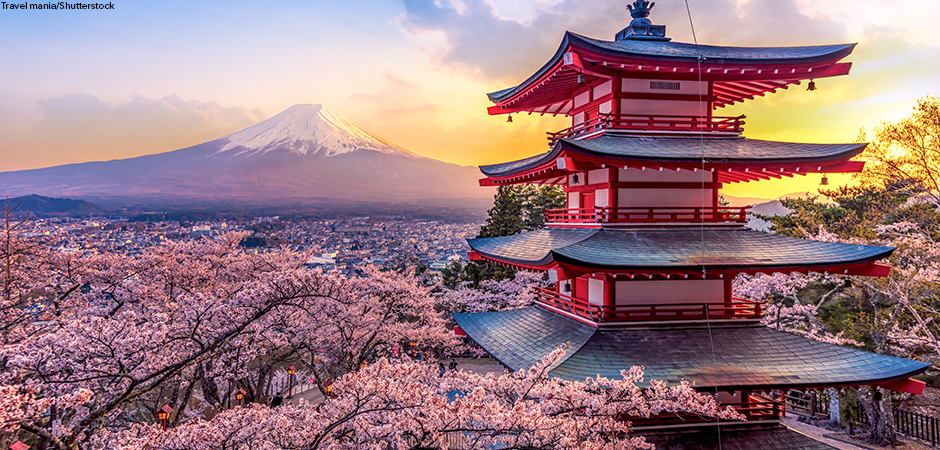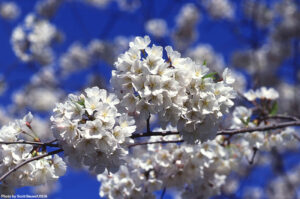
The flowering cherry tree grows throughout the world in mild climates. In Japan, the tree is called sakura. It is planted as an ornamental tree and has played an important role in the culture of Japan. In springtime, the flowering cherry tree produces pink and white flowers called cherry blossoms. The cherry blossoms do not produce food but are prized for their beauty. The blooming season for cherry blossoms differs around the world, depending on where the trees are located. People hold festivals to celebrate the arrival of the cherry blossoms.
Cherry Blossoms in Japanese Culture
Each year in Japan, there are numerous national and regional cherry blossom festivals that celebrate the flowering of cherry trees. These festivals occur between late March to the middle of May. Cherry blossoms have a deep significance in the Japanese Shinto religion where the delicate flowers symbolize rebirth and renewal of life.

The cherry trees bloom for a brief period, usually around one week. Because they only last a short time, the cherry blossoms have also come to represent a philosophy called wabi-sabi. This philosophy celebrates the idea that beauty is not permanent. At flower-viewing parties called hanami, Japanese people enjoy the blossoms’ fleeting beauty. They appreciate the connection between the short-lived life of the cherry blossom with the brief nature of life for all living things.
Cherry Blossoms Bloom in Washington, D.C.
There is also a national cherry blossom festival each year in the United States. This festival is held in Washington, D.C., where numerous ornamental cherry trees have been planted. In 2024 this festival occurs from March 20th to April 14th.
The tradition of cherry blossoms in Washington, D.C., began with the vision of journalist Eliza Scidmore. A frequent traveler to Japan, Scidmore developed an appreciation for their ornamental cheery trees. She campaigned to plant them in the nation’s capital in the 1880s. First Lady Helen Taft, wife of President William Taft, adopted the cause in 1909. In 1912, the mayor of Tokyo and Dr. Jokichi Takamine, a Japanese chemist, gifted cherry blossom trees to the people of the United States. The trees were planted in Washington’s Potomac Park. Today, cherry blossom trees line the Tidal Basin of the National Mall and other parts of the city, symbolizing the enduring friendship between Japan and the United States.
